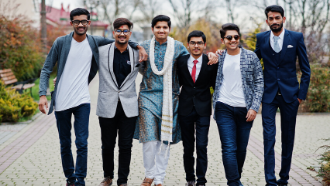Understanding Behavioral And Trends Of Millennial: Best Research Areas For Future Researchers: 2019(Indian Perspective)
Oct 1st, 2019
RESEARCH REPORT
In Brief:
- The employment rate of the Indian millennials is 47%, which makes them the most attractive segment for different retailers and brands.
- Indian millennials have become the chief users of the online retail modes because of the rising internet penetration.
- The brand loyalty among the Indian millennials is decreasing when compared to other older generations.
In recent years, millennials, the individuals born between 1980 and 1999, have gained a lot of attention because of their behavior and habits. The global population of the millennials is approximately 2 billion, which is 27% of the total global population. (Deloitte, 2019) Some of them are on the verge of developing into responsible adults, whereas some of them have already stepped into adulthood while adapting themselves to the rapid modernization. According to Deloitte 2018 millennial report (Private, 2018), India has a millennial population of 440 million, which equates to 34% of the entire Indian population. In addition to this, millennials constitute 47% of the entire Indian working population (Livemint, 2019). The spending power of the millennials has increased along with their access to different products and services.
The millennials are the first generation to utilize the advancements in technology for a variety of purposes including communication, entertainment, education, shopping, etc. Notably, the availability of various online purchase channels has transformed the way millennials purchase. Therefore, it is vital for the brands to adopt different strategies to that are streamlined to attract the millennials (Jennifer Brown et al., 2017).
Millennials have become the chief users of the online retail modes because of the rising internet penetration (Foundation, 2018). A variety of things including fashion, electronics, groceries, food, household supplies, beauty products, arts, handicrafts and many more are available online (FCCI & PWC, 2016). The easy return policy of the online shopping sites that allows the consumers to try the products and return them if they are not satisfied is one of the primary reasons for the popularity of e-commerce sites. Moreover, the future trends of the e-commerce industry have indicated that in the future a large number of people from the tier III and tier IV cities will be involved in online buying too. The main reason for this is the availability of smartphones and data plans that are affordable (AKBEN, 2019). The decision making process involved in the purchase of good is influenced by a number of aspects including ratings, online reviews, peer opinions etc. (Sethi, Kaur, & Wadera, 2018).
The brand loyalty among the Indian millennials is decreasing when compared to other older generations. The brand loyalty of the millennials is impacted by millennials preference for convenience and the increasing use of technology. However, the Indian millennials are often attracted towards brands that hold loyalty towards the brands that hold values and has unique selling propositions. The association between brand loyalty and brand resonance is very weak in the case of the millennials. At present, where there are number of brand choices are available for the Indian millennials, many brands are finding it very difficult to gain the brand loyalty of the Indian millennials (Private, 2018). The brand managers should develop different strategies including online personalization, creating emotional impact etc. in order to gain the trust of the individuals towards their brands which is the key towards develop a brand loyalty among the millennials (Gehan, Dhameeth & Yamamoto, 2017).
Social media also plays an essential role in helping the brands to make a personal communication with the millennials. In order to personalize the relationship brands have with their customers, brands can resort to online recommendations. The online recommendations can be in the form of personal reviews by customers or personalized product recommendations provided by the search engines. In addition to this, brands can provide loyalty programme which provides personalized offers to the millennials based on their purchase patterns (Smith, 2017). Further millennials are often attracted to brands whose values are similar to that of their values.
References

